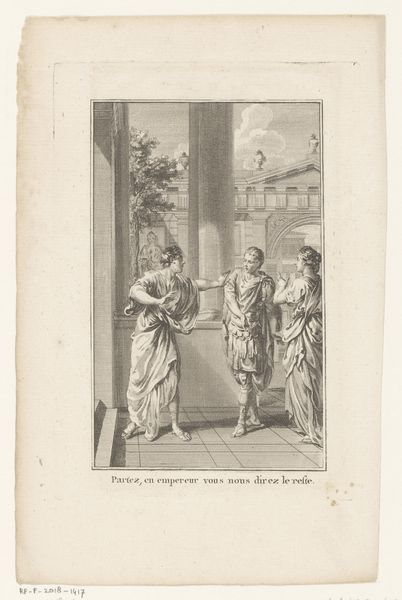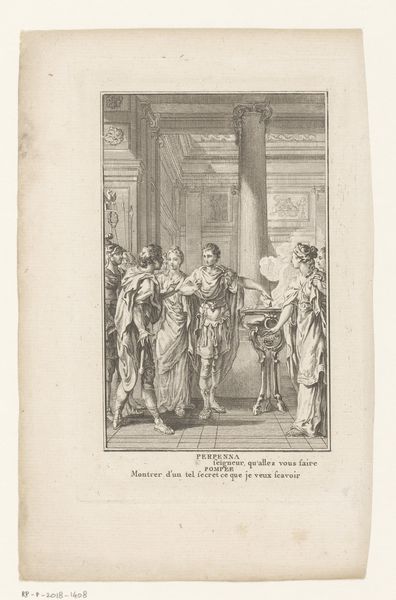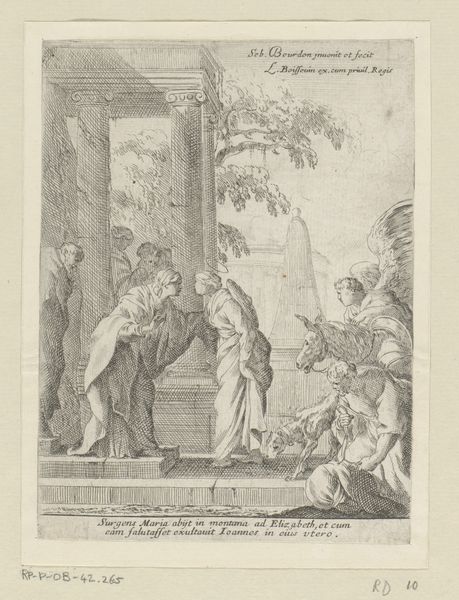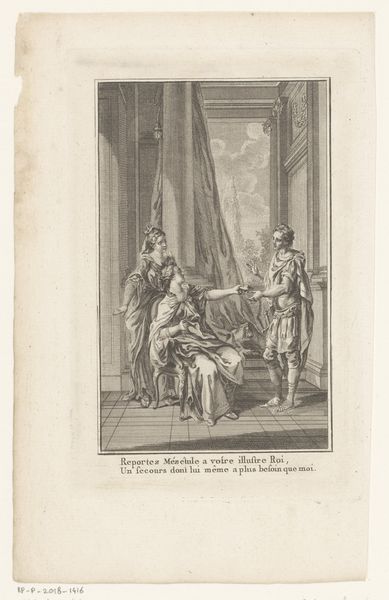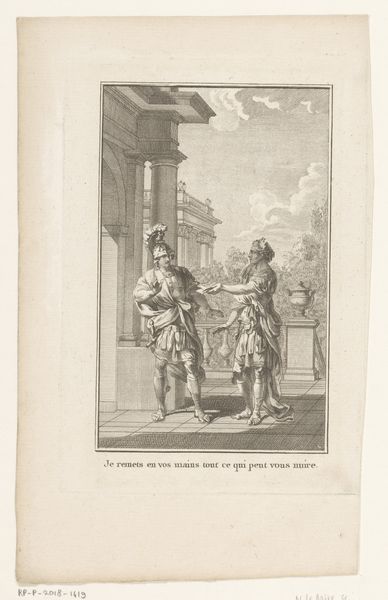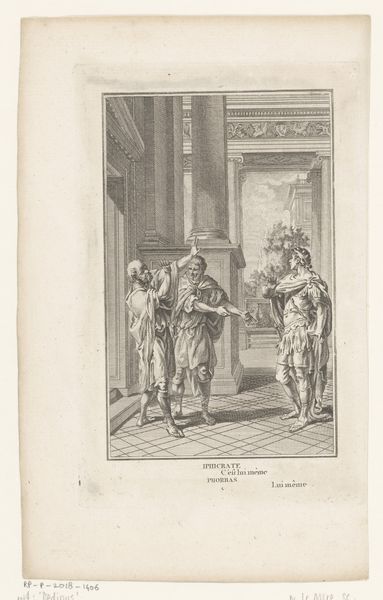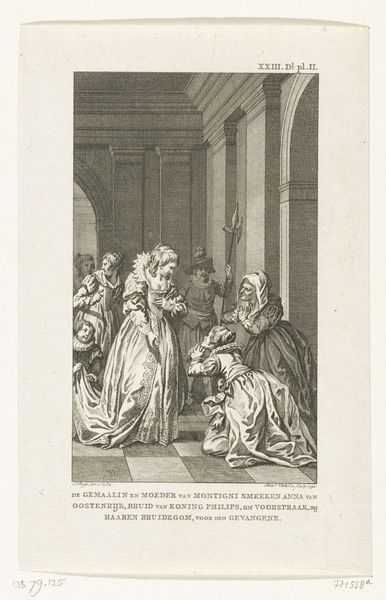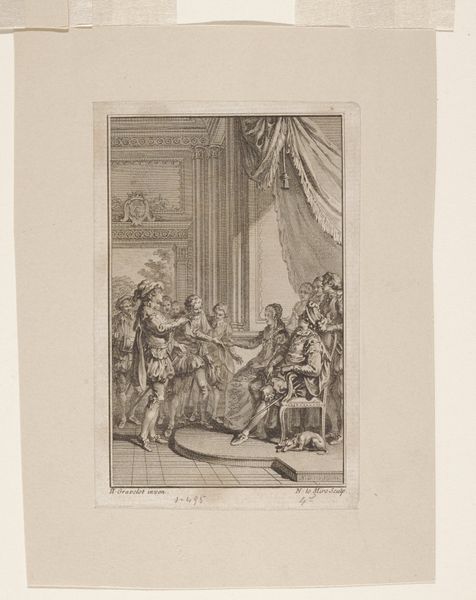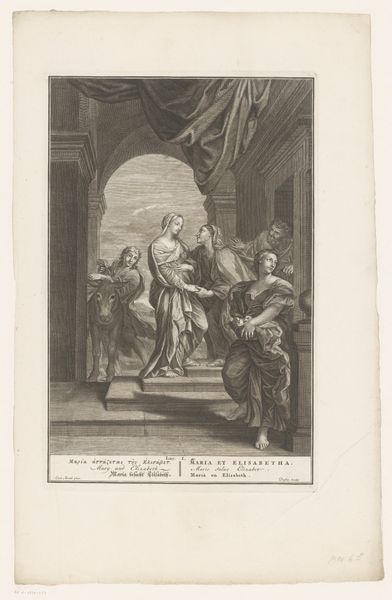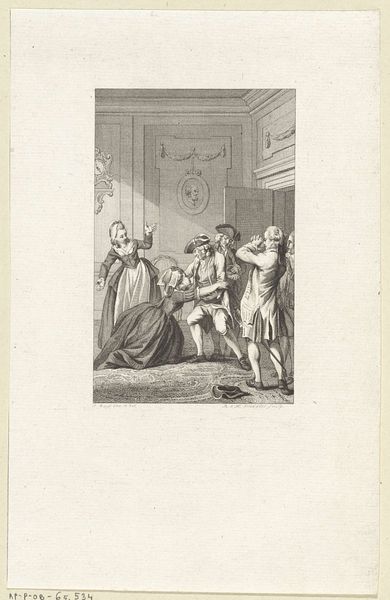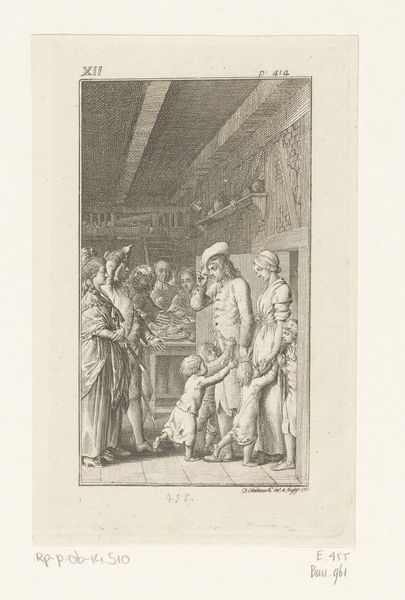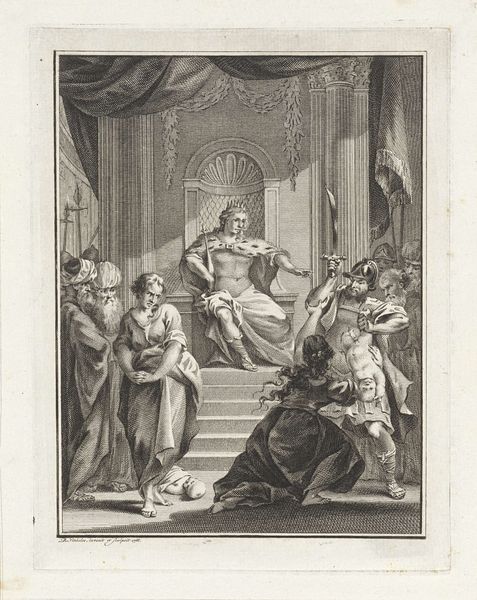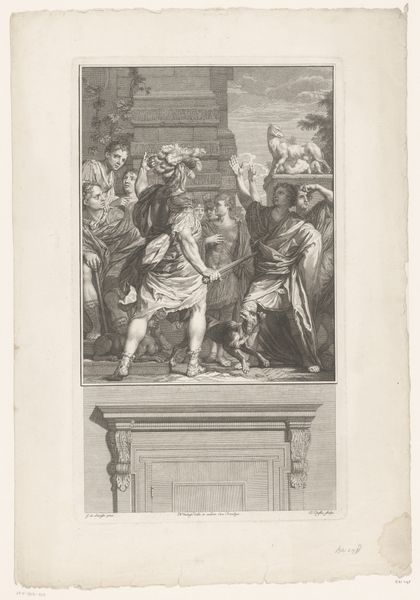
Dimensions: height 168 mm, width 110 mm
Copyright: Rijks Museum: Open Domain
Curator: There's a simmering tension in this print; I almost feel like I’m intruding on a very personal moment. Editor: Indeed. We're looking at Antoine Radigues's 1763-1764 etching, "Scène uit Suréna met drie personen in een interieur," or "Scene from Surenas with three people in an interior." The Baroque style and academic approach create an interesting tension with what appears to be a quite dramatic moment. Curator: Baroque always feels like a costume drama, doesn't it? I love how the artist captured so much drama and feeling with just ink on paper. It’s minimalist, almost raw in its intensity. You can just sense the weight of the moment hanging in the air. I think it may have something to do with how the space is organized around the people - but also the people themselves and their particular gestures. Editor: And that is due in no small part to Radigues positioning his subjects within the tradition of history painting. Note the carefully constructed architecture and theatrical drapery which sets the stage for the human drama playing out before us. The architecture and dress code are classically inspired - you will find Roman togas! And you see that the etching style, while clean and precise, seems to add an extra layer of emotional intensity to the scene. We are, after all, peering into an intensely human narrative here. Curator: You’re right - the architectural setting does seem to heighten the emotional atmosphere. It's like a pressure cooker for human drama! And look at the central figure gesturing outward with one open hand and one fist closed tight! One could sense conflict. The seated figure could be pleading but resigned to fate... What exactly do you see there? Editor: I see a performance of power and submission. The woman standing exudes defiance, challenging the seated figure’s passivity perhaps. Note, too, the title etched beneath: "Et vous partez", French for "And you leave," suggests exile or a forced departure - a moment of decisive action imposed upon one individual by another within the confines of domestic space. It’s interesting that a moment of expulsion is memorialized here. What is at stake, I wonder, and why do we consider these particular people significant enough to depict? Curator: It all feels rather charged. But what intrigues me most is its open-endedness. So many possible readings depending on who is looking. I feel invited to imagine the before, after, and everything in-between, as if each one of us could find some element of ourselves reflected in this stark scenario. Editor: A mirror for our own relationships of power.
Comments
No comments
Be the first to comment and join the conversation on the ultimate creative platform.
